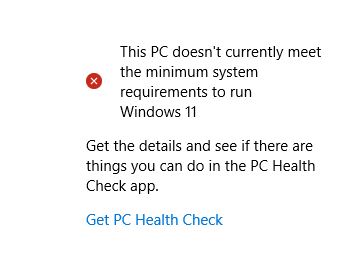In less than a year, Microsoft will be ending support for its nearly 10-year-old operating system, Windows 10. That’s right—after October 14, 2025, Microsoft will no longer provide free updates, technical assistance, or security fixes for this widely used OS. So, what does this mean for your business, and what options do you have moving forward? Let’s break it down.
Why Windows 10 End-of-Support Matters

- Security Risks: Without regular updates and security patches, your system becomes increasingly vulnerable to malware and cyberattacks. For small businesses that handle sensitive data, this can be a critical liability.
- Compliance Concerns: Many industries have regulatory requirements for using supported and secure software. Running an outdated OS could lead to compliance breaches.
- Compatibility Issues: As new software versions roll out, compatibility with Windows 10 may decline, potentially disrupting your operations.
While doing nothing might seem tempting, the risks outweigh the benefits. Continuing with Windows 10 beyond its end-of-life could lead to severe cybersecurity threats and lost productivity, so it is important to weigh up your options.
What Are Your Options After October 2025?
1. Upgrade to Windows 11
Windows 11 is the most logical upgrade path. It offers enhanced security features, a modern user interface, and support for the latest software. However, Windows 11 has stricter hardware requirements compared to Windows 10. To run Windows 11, a PC must have a compatible 64-bit processor, at least 1 GB of memory, 64 GB of storage, and TPM 2.0 (Trusted Platform Module), which provides hardware-based encryption.
Before upgrading, ensure that your hardware is compatible, and that TPM is enabled in the system BIOS. Upgrading to Windows 11 can help businesses stay secure and maintain compatibility with future software updates.
After some initial teething and compatibility issues when it first released in October 2021 it has now reached a point where it is a stable and useable operating system.
2. Purchase New Hardware

If your current devices don’t meet the requirements for Windows 11, you may need to consider purchasing new hardware. While this might seem
like an expensive option, it can be more cost-effective in the long run, particularly for businesses that need to maintain secure and
compliant systems. Microsoft and its partners are already pushing new PCs, some of which include powerful features like custom neural
processing units in the latest Copilot+ PCs.
3. Pay for Extended Support
Microsoft are offering a Windows 10 Extended Security Updates (ESU) subscription for personal use when they stop updating the OS in October 2025. For USD30 you'll get "Critical and Important security updates for Windows 10" however, new features, bug fixes and technical support will no longer be available from Microsoft. This could be a temporary measure to buy more time to transition, however it appears to only be aimed at personal users and not businesses. Relying on paid support indefinitely isn’t a long-term solution, and it’s essential to plan for an eventual upgrade.
4. Wait for Windows 12
There are rumors that Windows 12 may be released between July and October 2025. This potential release could be strategically timed with the end of Windows 10 support. While details about Windows 12 are scarce, it’s expected to offer further advancements in security, performance, and AI integration. If your business can wait and your hardware can handle the anticipated requirements, it might be worth considering.
5. Do Nothing and Stay on Windows 10
You could choose to ignore the end-of-support deadline and continue running Windows 10. However, this approach is not recommended due to the significant risks involved:
- Security Vulnerabilities: Without regular updates, your system becomes increasingly susceptible to malware, ransomware, and other cyber threats. Small businesses are often targeted by cybercriminals, and using unsupported software amplifies that risk.
- Loss of Compliance: Regulatory standards often require up-to-date software to ensure data security. Continuing with Windows 10 could put you out of compliance, leading to potential fines or penalties.
- Software Compatibility: As software vendors update their products, they may no longer support older operating systems, leaving you with limited access to essential updates or new features.
While your system won’t suddenly stop working on October 14, 2025, the lack of security updates can quickly turn into a major problem.
Why You Shouldn’t Ignore the End-of-Support Deadline
It’s essential to understand that while your Windows 10 system won’t suddenly stop working on October 14, 2025, the absence of regular
updates and security patches leaves you at significant risk. Small businesses are increasingly targeted by cybercriminals, and using
unsupported software amplifies that threat.
- Plan Your Upgrade Early: Waiting until the last minute increases risks and limits your options. Start evaluating your hardware and software needs now.
- Weigh Your Options: Upgrading to Windows 11 or purchasing new hardware are viable solutions. However, keep an eye on potential paid support from Microsoft or new developments related to Windows 12.
- Consider the Costs: Whether it’s investing in new PCs, upgrading current systems, or paying for extended support, plan your budget accordingly.
FortiTech are able to offer pricing on new hardware if you want to go with that option, and we are also running a special deal on
updates from Windows 10 to Windows 11 for eligible devices, give us a call
or email
to discuss how we can help.